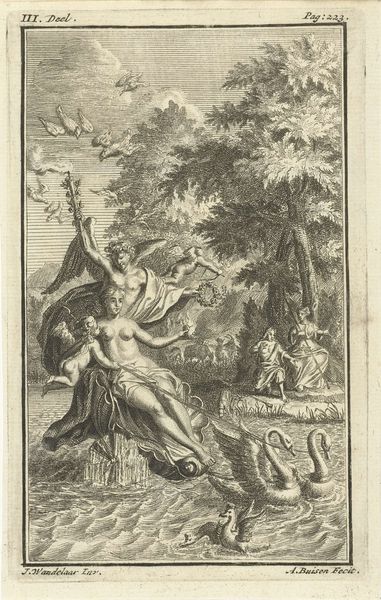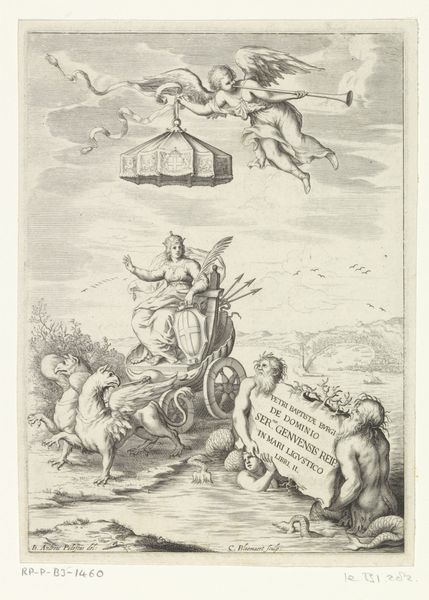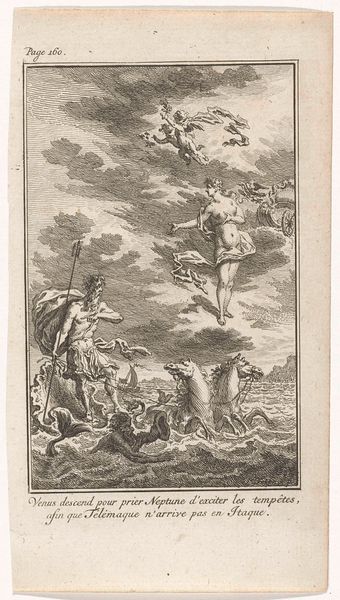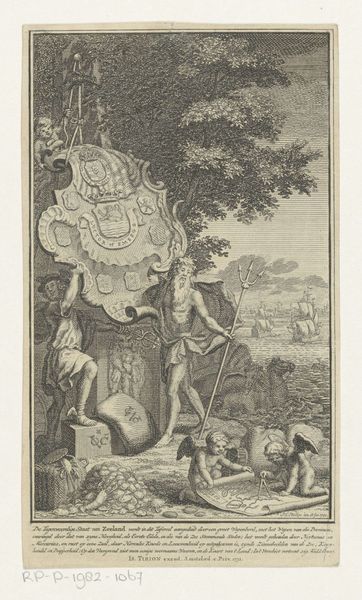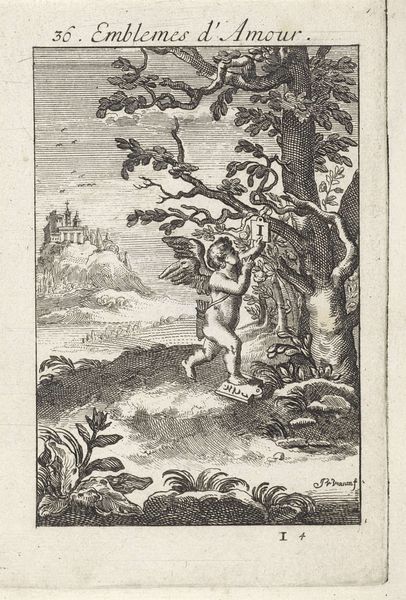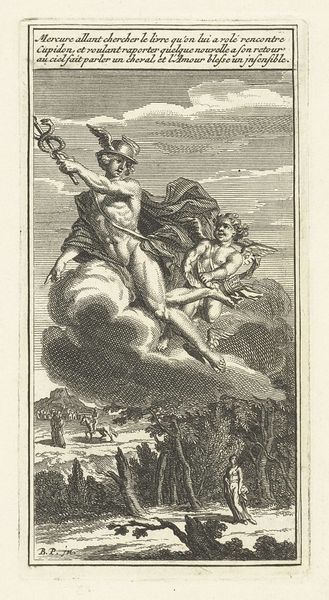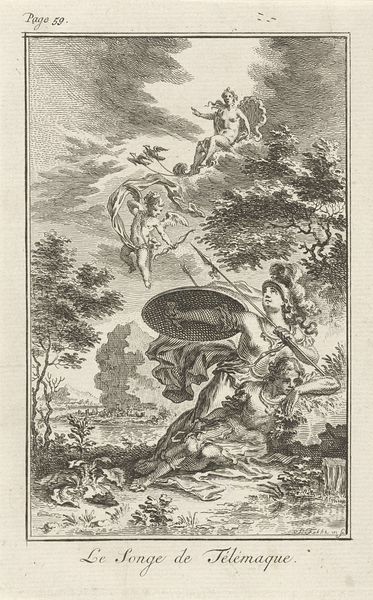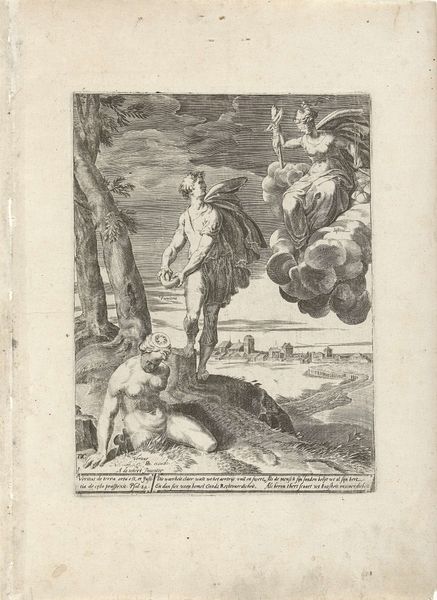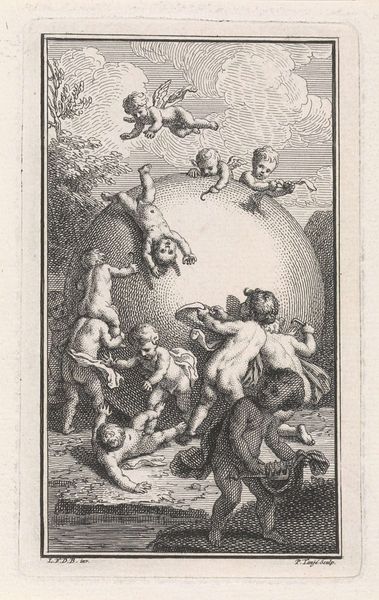
engraving
#
baroque
#
figuration
#
line
#
history-painting
#
engraving
Dimensions: height 149 mm, width 113 mm
Copyright: Rijks Museum: Open Domain
Jacob Folkema's "Venus en Neptunus," made around the 18th century, presents us with a divine tableau of love and dominion. Venus, the goddess of love, sits enthroned on clouds, while Neptune, god of the sea, rides his chariot pulled by seahorses through the waves. The symbols here are potent. Venus embodies beauty and desire, her presence evokes the generative forces of nature. Neptune with his trident, symbolizes control over the seas, a scepter of power. These gods transcend their immediate context. We see Venus echoed in countless images of idealised beauty throughout art history, from Botticelli's "Birth of Venus" to modern advertising, she is the eternal feminine. Neptune’s trident resurfaces in emblems of maritime authority. Consider the trident. This three-pronged spear did not originate with Neptune, but with the fishermen of ancient Greece, who used it to catch fish. This evolution—from a practical tool to a symbol of divine authority—reveals how human needs and aspirations are projected onto the cosmos. The artwork is not just a depiction but a deep dive into the collective subconscious, a powerful force engaging viewers on a deeply rooted, primal level. The gods, like cultural memories, resurface, evolve, and take on new meanings.
Comments
No comments
Be the first to comment and join the conversation on the ultimate creative platform.
